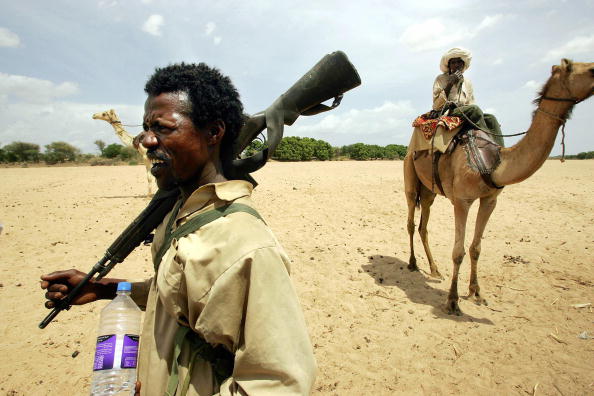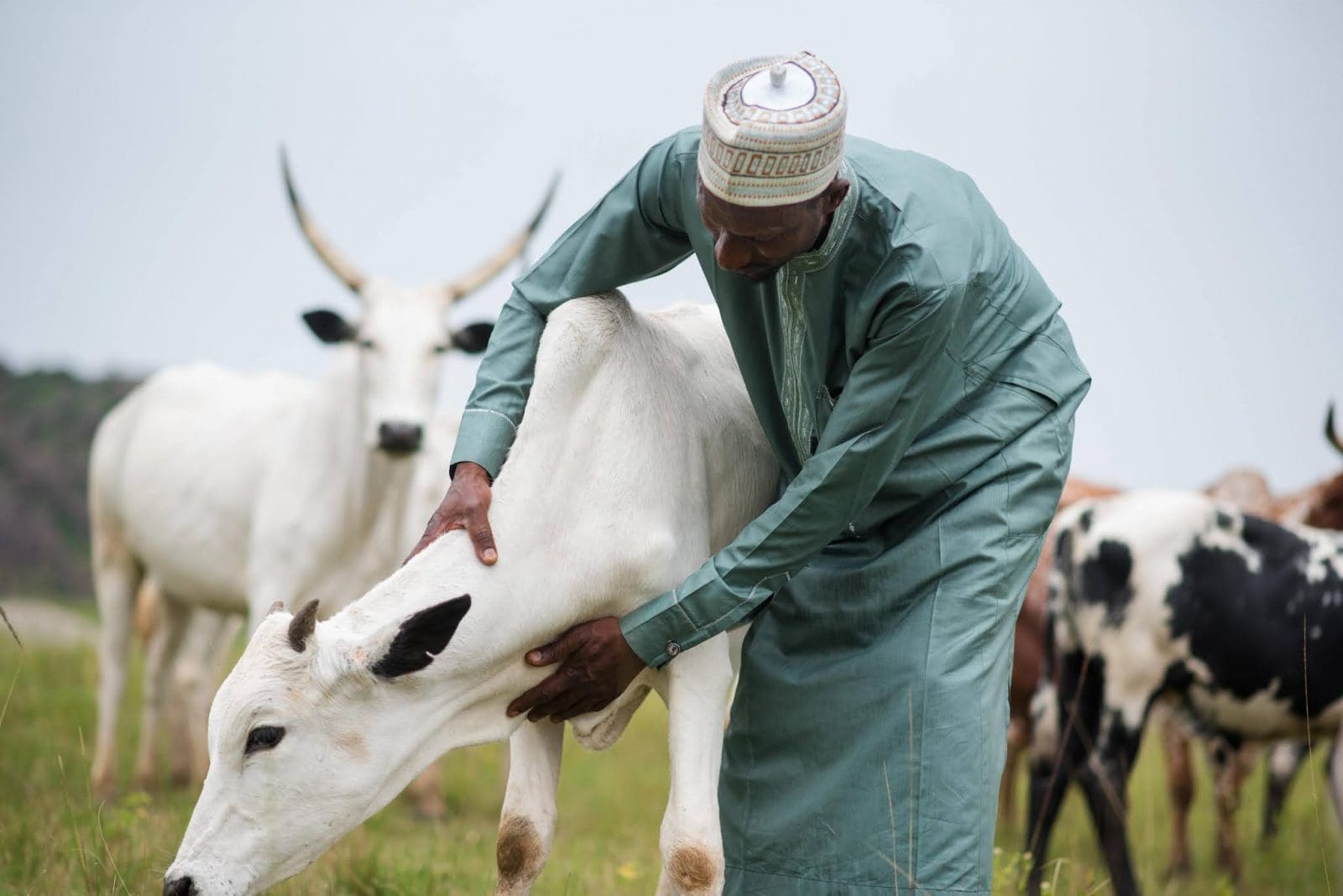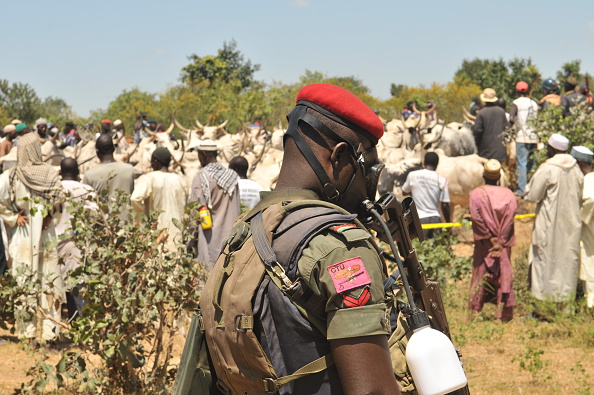Pastoralism is increasingly referenced in policy and programming discussions of transboundary crime and armed group activity, as pastoralists are often presented as potential vectors for violent crime and/or transnational terrorism. While grounded in valid concerns about the activities of some pastoralists, this lens is also used to justify discriminatory or abusive practices by government forces and local communities.
All over the world, livestock production has been a focal point for criminal activity when the demand for meat and animal products skyrockets, as has been the case in the Sudano-Sahel. Livestock are among the most valuable things people can own in rural areas, and pastoral migration routes frequently cross through the remote territories where criminal groups thrive. Cattle rustling or extortion of livestock owners is not a new practice, but in recent years the proliferation of arms and growing strength of criminal and insurgent groups has led to more frequent and deadly clashes between professional rustlers and armed cattle guards. Policing borderlands and rural territories is a challenge even outside of active conflict zones and many states lack the resources to protect against the increasing banditry.
To protect their livelihoods, pastoralists have adapted in different ways. Wealthier livestock owners hire more armed guards when they need to move their livestock through insecure territory, while many subsistence pastoralists are forced to move to new regions or routes where they may end up in conflict with local farmers. Some pastoralists have formed alliances with local armed groups, acting as conduits for supplies or communication. For instance, some Mbororo pastoralists in the northern DRC have been accused of providing support to the Lord’s Resistance Army (LRA), although the Mbororo themselves are often victims of violence from the LRA.
Though pastoralists are common targets of theft or exploitation, some also engage in trafficking or poaching. Pastoral migration routes that cross through remote territories and across borders outside of state supervision can be ideal for moving drugs, guns, or other illicit goods. Though the pastoralists who engage in violence or criminal activity are only a minority, their behavior has often been invoked to stoke fear of pastoralists or specific pastoralist ethnic groups (see Module – Conflict Management). The perception that pastoralists generally are a security threat is seemingly justified because of the tactics they use to survive – arming themselves to protect against bandits, avoiding state authorities when crossing the border, or traveling along routes that have been co-opted for smuggling. In the public eye, these nuances are diluted into a black and white depiction of pastoralist groups as criminals, a simplification unchallenged by national law enforcement and counterterrorism officials.
Community leaders are often the first to identify and respond to violent threats, particularly in remote rangelands where security forces are thinly deployed. These local leaders can serve as eyes and ears for security forces to help focus their interventions on high-risk areas for cattle rustling, smuggling, kidnapping, or reprisal killings. In addition, civilian-operated early warning systems (EWSs) in remote regions can provide overstretched security providers with critical information on where to focus their limited resources (see also Strategy – Regional Security Coordination). Community-oriented security in contested or stateless areas, though, requires a careful balancing of interests and substantial trust-building. Fostering collaboration with pastoralist groups may be particularly challenging as trust in state authorities may be very low after a long history of neglect.

Along the border between Mali and Niger, law enforcement responses to cattle theft have been hindered by the movement of stolen livestock across borders. Nigerien authorities who come across stolen cattle from Mali have no way to know how to get in touch with the owners. And the victims of theft have no channel to reach authorities and have to take it upon themselves to wander out in search of their livestock. Beginning in 2017, Search led an intervention to build trust and coordination between authorities and local communities in border areas. This included inter-command dialogue between security forces, the establishment of an early warning network, and organizing forums for pastoralists to speak with security forces directly. The result has been stronger channels for information sharing. Victims of theft could report critical information, such as the time and location that their animals were taken, rather than feeling the need to take justice into their own hands.

In the contested border region of Abyei between Sudan and South Sudan, access to grazing and farming land has been a key point of conflict between the Misseriya and Dinka Ngok communities. Misseriya pastoralists from the north have long migrated their livestock south to Abyei to access pasture and water during the dry season, and traders from both communities would rendezvous in local markets to sell livestock and other goods. Amid civil violence and South Sudanese independence, however, these interactions broke down. Economic ties were partially revitalized in 2016 with the Amiet market, which was established following a series of trust-building efforts between communities facilitated by third party organizations like Concordis International and the FAO. Due to continued insecurity on the border, the UN Interim Security Force for Abyei stepped in to provide protection for the traders. Without the coordinated approach between civilian peacebuilding interventions that could reestablish intercommunal relations and the presence of international security forces that could provide an element of security, this trade venue would not have been feasible given the ongoing strife.
The open rangelands and porous borders that pastoralists inhabit are ripe for armed groups to engage in smuggling, cattle rustling, or other illicit trade. As easy targets for theft or extortion, pastoralists have responded by aligning with militia groups, hiring private security, or removing livestock from recognized routes and official border checkpoints. Reinforcing security in these remote territories and guaranteeing safe transhumance would reduce violence and cut off revenue to insurgent groups and criminal syndicates. In some states, these areas are monitored by specialized security forces (as in the Nomadic Guard in Chad or the Agro-Rangers in Nigeria). In theory, these types of forces fill a critical gap in law enforcement as a light, easily mobile force that has the capacity to engage with communities in more remote areas. However, such forces are often under-resourced compared to local criminal groups. Specialized law enforcement and border security struggle with a lack of resources and technical capacity, challenges which are compounded by a lack of public trust and accountability. Any security sector reform agenda aimed at addressing rural banditry and insurgent activity should be adapted to address potential tensions between security forces and pastoralist populations or other inhabitants of remote territories.

The National and Nomadic Guard of Chad (GNNT) (originally the Territorial Guard) is a domestic Chadian security force formed in the 1960s to provide security for officials, protect government buildings and prisons, and maintain order in rural areas. Officers operating on horseback or camel are adapted to negotiate the terrain in nomadic regions. As the ones responsible for maintaining rural order, they are the agency that often deals with monitoring transhumance routes and activity in national parks and addressing cattle theft. Though the GNNT represents an example of an law enforcement agency adapted to a context of nomadic pastoralists, they have faced accusations of discrimination, excessive punishment, and poor coordination with other security forces. In October of 2018, for example, GNNT General Saleh Brahim arrested 15 village chiefs for refusing to sign a document to renounce their right of land ownership and subjected them to degrading treatment.
Photo: Camel guards patrol on the Sudan-Chad border in Abulu Kore (Darfur), Eastern Chad. Credit: Thomas Coex/AFP via Getty Images.
Various public officials and security agencies who are responsible for securing borderlands and pastoral rangelands have raised concerns about the comparatively small percentage of the pastoralist population that engages in criminal activity and insurgency, described by the UN Economic Commission for Africa as “fringe pastoralism.” There are valid reasons to be concerned that there is a connection between pastoral livelihoods and illicit activity, as outlined in this Module. However, the activities of fringe pastoralists are often cited to legitimize suspicion of pastoralist practices writ large or to demonize pastoralist ethnic groups. The perception that pastoralists (or members of pastoralist ethnic groups) are violent criminals has fueled discrimination and intercommunal violence. It is the responsibility of both media outlets and public officials to shape the narrative in a positive way and present a balanced and accurate picture of the actions of fringe pastoralists. Training on conflict sensitivity can help reporters and officials challenge their own prejudices about pastoralist groups and craft communications that are not incendiary.

Fulani pastoralists in West Africa have been frequently stigmatized as a militant community, leading to abuse or violence directed against Fulani civilians. The perception that the whole Fulani population are part of an organized, militant threat has been subtly reinforced by the way they are represented in some research and mainstream media. One key example is the representation of Fulani in conflict event data sets like the Global Terrorism Database (GTD). The GTD compiles data on terrorist events all over the world by drawing primarily on local news sources. The system has used the umbrella term “Fulani militants” to categorize attacks where Fulani individuals or groups have been implicated as the perpetrator by local media. This can include incidents where media sources report that the perpetrators are suspected to be Fulani, even if that has not been confirmed or verified by law enforcement. Coding the data this way can create the illusion that these attacks are all committed by a unified group, even though they may be wholly unrelated.
Drawing on this data, the 2015 Global Terrorism Index – which analyzes global trends in terrorism – presented “Fulani militants” as the fourth deadliest terrorist organization in the world, comparable to Boko Haram or the Islamic State. This point was reiterated in mainstream media sources, stirring anti-Fulani sentiment at the local level. The presentation of “Fulani militants” as a group was removed in later GTI reports, and discussions of the Fulani in the data have been supplemented by a disclaimer on pastoralism-related violence.
Photo: Fulani pastoralist with his cattle in Nigeria. Credit: Search for Common Ground
